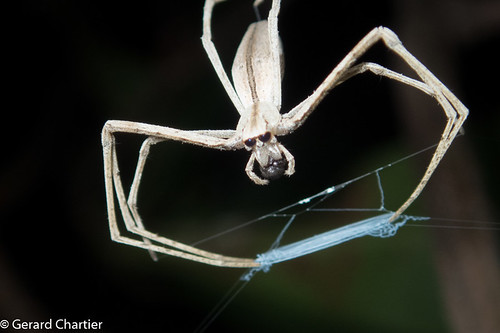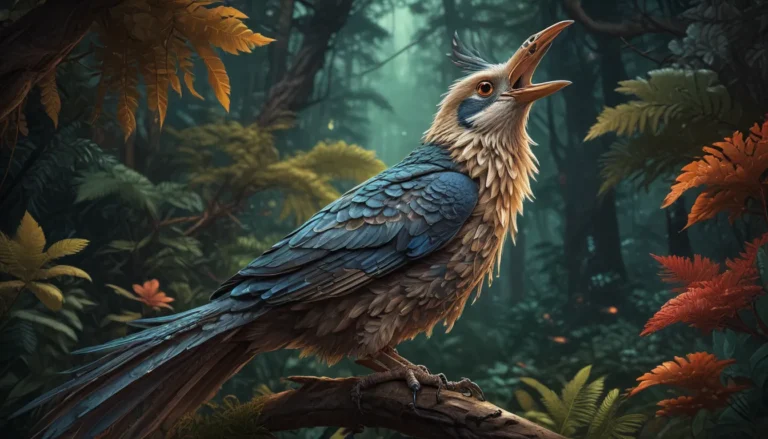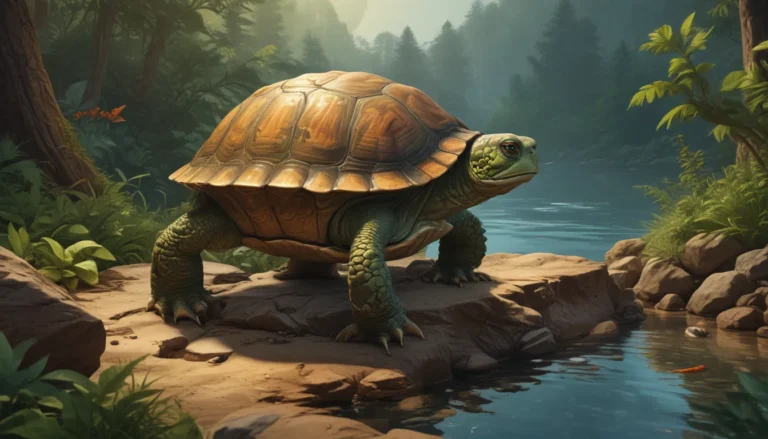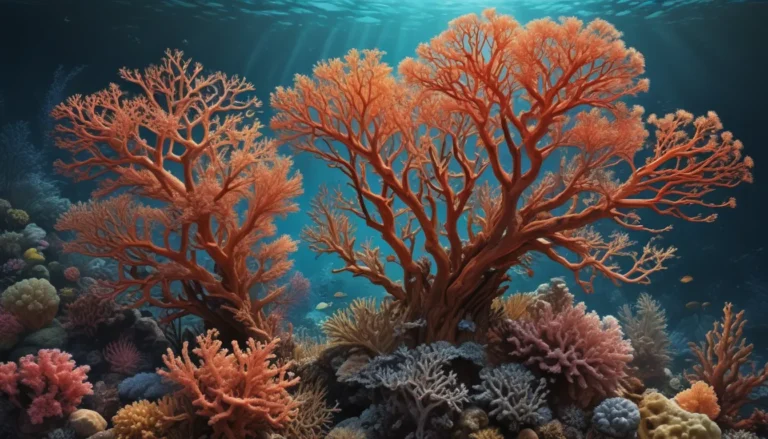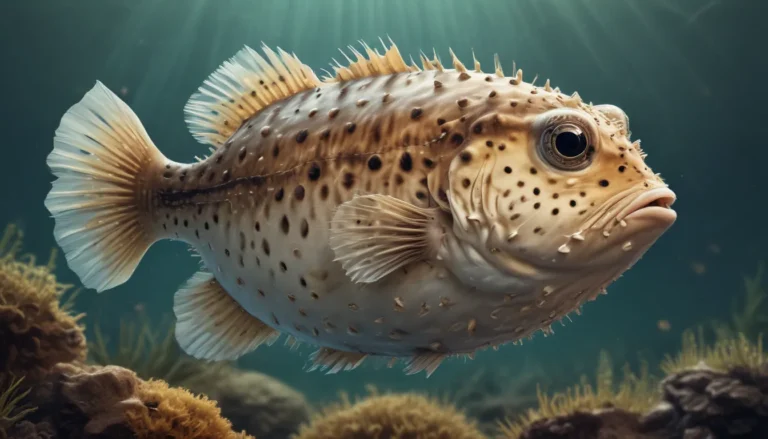The pictures we use in our articles might not show exactly what the words say. We choose these pictures to make you interested in reading more. The pictures work together with the words but don’t take their place. The words still tell you the important facts.
Have you ever heard of a spider that casts nets like a skilled fisherman? Welcome to the extraordinary world of Ogre-faced Spiders! These remarkable arachnids, also known as net-casting spiders, are nature's tiny marvels that never fail to amaze. Let's dive into some captivating facts about these unique creatures that will leave you in awe.
1. The Masters of Night Vision
Imagine having eyes so powerful that you could see clearly in the darkest of nights. That's exactly what Ogre-faced Spiders can do! These eight-legged wonders possess specialized eyes that grant them unparalleled night vision. Their large posterior median eyes are incredibly sensitive, allowing them to navigate and hunt with precision even in the dimmest of light.
But here's the kicker: their night vision capabilities surpass even those of cats and owls! Unlike these nocturnal mammals, Ogre-faced Spiders don't have a reflective layer (tapetum lucidum) in their eyes. Instead, they've developed a fascinating adaptation. Each night, a large area of light-sensitive membrane is manufactured within their eyes. This membrane is so efficient at gathering available light that it puts other nocturnal creatures to shame. And when dawn breaks? The spider quickly destroys this membrane, ready to create a fresh one for the next night's hunt.
2. The Art of Net-Casting
Now, let's talk about their unique hunting technique that gives them their alternative name - net-casting spiders. Unlike their web-spinning cousins, Ogre-faced Spiders have a trick up their sleeve (or should we say, legs?).
Here's how they do it:
- They create a small, rectangular silk net
- They hold this net between their front legs, stretching it above their heads
- When prey comes within range, they quickly throw the net over it
This technique is not just unique; it's incredibly effective. These spiders can launch their silk nets over distances up to two or three times their body length. Talk about a long-range attack!
3. Precision Hunters
Guided by their impeccable vision, Ogre-faced Spiders demonstrate remarkable hunting precision. They can detect approaching prey and release their nets in a split second, showcasing unparalleled targeting skills. It's like watching a miniature sniper in action!
But their precision doesn't stop at sight. These spiders are equipped with modified bristles called trichobothria on their front legs. These bristles give them heightened sensitivity to subtle air movements, enabling them to pinpoint the precise location of their prey with remarkable accuracy. It's a combination of sight and touch that makes them formidable predators.
4. Masters of Disguise
You might think that with such impressive hunting skills, Ogre-faced Spiders wouldn't need to hide. But nature has gifted them with yet another talent - the art of camouflage.
These spiders have honed the ability to blend seamlessly into their surroundings, often resembling pieces of bark or twigs. This skill serves a dual purpose:
- It helps them evade detection by predators
- It allows them to ambush unsuspecting prey
Some species of Ogre-faced Spiders take this a step further. They have evolved elongated body shapes that aid in their concealment among plants and vegetation. It's a testament to the adaptability and versatility of these fascinating arachnids.
5. Upside-Down Predators
If you thought spiders hanging from webs were cool, wait till you hear this! Ogre-faced Spiders have a unique way of positioning themselves for the hunt. They use claw-like pads on their feet to hang upside down from branches or elevated surfaces while casting their nets.
This upside-down position might seem odd, but it's a strategic masterpiece. It allows them to:
- Have a clear view of potential prey flying below
- Position their net for optimal capture
- Surprise their victims from above
It's like a trapeze artist meets a skilled hunter - a combination that makes Ogre-faced Spiders truly one-of-a-kind predators.
6. Recycling Experts
In today's world, we often talk about the importance of recycling. Well, it seems Ogre-faced Spiders were way ahead of us in this department! These resourceful arachnids have a unique ability to change their silk nets regularly to ensure optimal functionality.
But here's the interesting part - they don't just discard their old nets. Instead, they consume them! By eating their old nets, they recycle the silk proteins to construct new ones. It's a sustainable approach to maintaining their hunting tools that puts many of our recycling efforts to shame.
This process isn't just about being eco-friendly. It's a crucial survival strategy. By constantly renewing their nets, Ogre-faced Spiders ensure that their primary hunting tool is always in top condition, ready for the next catch.
7. Punching Above Their Weight
Don't let their small size fool you. Ogre-faced Spiders are capable of capturing insects much larger and heavier than themselves. It's like watching David take on Goliath, except in this case, David wins every time!
Their silk nets, despite being delicate enough to be nearly invisible, have exceptional tensile strength. This allows them to successfully trap and consume prey that would seem overpowering to a spider of their size.
But it's not just about strength. These spiders combine their strong nets with lightning-fast reflexes and potent venom. Once they've ensnared their prey, they swiftly inject venom to immobilize and subdue their catch. This venom not only incapacitates their prey but also aids in breaking down internal tissues, facilitating consumption and digestion.
8. Global Travelers
Ogre-faced Spiders are quite the globe-trotters! These adaptable arachnids can be found in various parts of the world, primarily in tropical and subtropical regions. Their distribution spans across:
- Southeast Asia
- Africa
- Australia
- Parts of the Americas
They thrive in warm and humid environments where they can find ample insect prey to sustain their solitary lifestyles. In places like Florida, you might spot a Deinopis (a genus of Ogre-faced Spiders) hanging upside down from a silk line under palmetto fronds during the day, waiting for nightfall to begin its hunting adventures.
9. A Family of Diversity
The Ogre-faced Spiders belong to the family Deinopidae, first described by Carl Ludwig Koch in 1850. This family is a testament to the diversity within the spider world. While we've been focusing on the net-casting abilities of these spiders, the family also includes other interesting members.
For instance, the genus Menneus, also known as humped-back spiders, belongs to this family. These spiders, while related to our net-casting friends, have their own unique characteristics and behaviors.
The diversity within this family showcases the incredible adaptability of spiders and how different species can evolve various strategies for survival, even within the same family.
10. Harmless to Humans
Now, I know what you might be thinking. With all these impressive hunting skills and potent venom, surely these spiders must be dangerous to humans, right? Well, here's a fact that might surprise you - Ogre-faced Spiders are completely harmless to humans!
Despite their formidable hunting skills, these arachnids pose no threat to us. Their small size and relatively mild venom (at least as far as humans are concerned) mean that they're non-aggressive towards humans. In fact, they're more likely to try and avoid us than confront us.
This peaceful coexistence is a beautiful reminder of how we can appreciate and admire these fascinating creatures without fear. It allows us to observe and learn from their incredible adaptations and behaviors without worrying about our safety.
Conclusion
From their extraordinary night vision to their unique net-casting hunting technique, Ogre-faced Spiders truly are marvels of the natural world. These tiny hunters, with their global presence and diverse family, remind us of the incredible adaptations that can evolve in the animal kingdom.
The next time you're in a tropical or subtropical area, keep an eye out for these fascinating creatures. You might just spot one hanging upside down, patiently waiting for its next meal. And remember, while they might look a bit strange (hence the 'ogre-faced' name), these spiders are harmless to humans and play an important role in their ecosystems.
So let's appreciate these eight-legged wonders for what they are - nature's own trapeze artists and net-casters, silently going about their business in the dark of night, showcasing the endless possibilities of evolution and adaptation.
